Fertilizers are essential for promoting healthy plant growth and maximizing crop yield. However, the choice between organic and inorganic fertilizers can be daunting for gardeners and farmers alike. This blog aims to demystify the differences between these two types of fertilizers, exploring their composition, benefits, and potential drawbacks. By understanding the unique characteristics of organic and inorganic fertilizers, readers will be better equipped to make informed decisions about which type is best suited for their agricultural or gardening needs. Whether you are a seasoned farmer or a hobbyist gardener, this comprehensive guide will provide valuable insights to support sustainable and effective fertilization practices.
What is Organic Fertilizer?
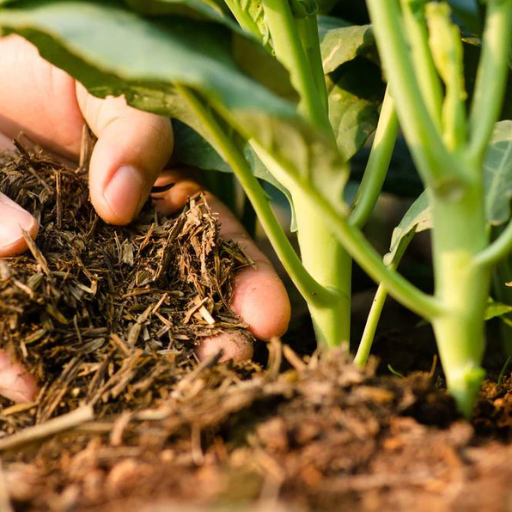
Varieties of Organic Fertilizers
Organic fertilizers are natural substances and can be grouped into several classes:
- Compost: It is decomposed organic matter like kitchen refuse, garden litter and manure that enriches the soil by adding nutrients and improving its composition.
- Manure: Animal waste from livestock such as cows, horses, and chickens which is rich in nitrogen among other essential nutrients.
- Bone Meal: A fine powder made from ground animal bones, providing a high source of phosphorus and calcium.
- Blood Meal: Dried blood from animals that is an excellent source of nitrogen for fast growth of plants.
- Fish Emulsion: It’s a liquid fertilizer made from decomposed fish which contains a balanced mix of nitrogen, phosphates, and potash.
- Seaweed Extract: This is derived from marine plants containing trace minerals, hormones and amino acids that stimulate plant growth and soil health.
- Green Manure: These are cover crops like clover or alfalfa grown specifically to plough back into the soil to add organic matter and nutrients.
Advantages Derived From Usage Organic Fertilizer
The use of organic fertilizers has got many advantages on both the soils as well as the plants. Firstly they help improve the structure of soils through increasing water holding capacity in them hence healthier roots systems leading to strong plant growth. Secondly also it introduces good microorganisms which break down organic matters slowly releasing nutrients thus keeping them away from leaching therefore supplying food efficiently for crop production. Furthermore it prevents nutrient runoff into streams making these types of fertilizers eco friendly. The reduction in application chemical inputs required to support soil fertility leads to overall productivity enhancement in agriculture. Also since they are obtained naturally these kinds of fertilizers contribute towards healthy ecosystems by supporting biodiversity while minimizing pollution levels at anytime anyplace anyway through nature without human assistance whatsoever whenever wherever however nonetheless neverthless because all over this planet whether whatever notwithstanding albeit although even though despite howbeit howsoever though when whereas while and yet.
Effects on the Soil Structure and Health
To improve soil structure and overall health, organic fertilizers play a significant role. Adding valuable organic matter to the soil is one of the roles played by organic fertilizers such as compost or manure, which greatly enhances its construction by increasing porosity and aggregation. This improved soil structure allows for better water penetration and retention which in turn reduces erosion and water run-offs. Additionally, it provides food for beneficial soil microorganisms. These organisms decompose organic matter into humus that increases the nutrient holding capacity of the soil thus creating a rich environment for plant roots. Furthermore, due to their slow release of nutrients over time; they ensure that plants receive enough nutrients for a long time hence maintaining good fertility levels of soils therefore making them healthy in that case. Hence adding organic fertilizers results in stronger agricultural systems capable of withstanding more varied pressures through greater resilience to stresses within this system as well as increased productivity thereof.
What is Inorganic Fertilizer?
Types of Inorganic Fertilizer
Inorganic fertilizer, also called as chemical or synthetic plant nutrients are man-made from mineral-based materials. Nitrogen fertilizers, phosphorous fertilizers and potassium fertilizers are the three major types.
- Nitrogen Fertilizers: These include urea, ammonium nitrate, and ammonium sulfate. They stimulate vigorous plant growth and encourage leaf expansion.
- Phosphorus fertilizers: Common examples are superphosphate and triple superphosphate. Root development and flowering require phosphorus.
- Potassium Fertilizers: Examples include potassium chloride (muriate of potash) and potassium sulfate. It strengthens plants’ resistance to diseases while enhancing overall growth.
Each type of inorganic fertilizer has its own role in promoting plant health and productivity thus making them a key component of modern agriculture.
Advantages of Inorganic Fertilizers
There are several advantages that make inorganic fertilizers popular in current farming techniques. Firstly, they offer an immediate nutrient supply hence allowing plants to uptake vital elements very quickly thereby leading to fast growth which translates to increased yields. As such when a quick nutrient boost is needed during critical periods of growth for crops as seen above, it becomes important to use inorganic based products. Secondly, inorganic fertilisers have high concentration levels that permit their formulation into accurate nutrient composition tailored specifically to match growing requirements within the farm field where they will be applied. Furthermore these products are easy both to store as well as apply therefore making it easier for large scale farmers manage their productions. In addition to this, they do not introduce weeds like organic options do or even pests or diseases which means farming can actually be cleaner with them on board. Generally speaking eco-friendly efficacy precision goes hand in hand with easiness concerning big-scale agriculture but yet farms need sustainability since then.
Impact on Soil and Environment
Consequently, the usage of such types has considerable effects on soil fertility alongside environmental pollution. This will eventually lead to acidification of the soil and reduced organic matter which in turn affects soil health and structure over time. Such degradation can result in decreasing its fertility as well as interfere with microbial ecosystem necessary for sustainable soil health.
On the other hand, environmental impact of excessive use of inorganic fertilizers often takes form of run-off into nearby water bodies. Nutrient overload causes eutrophication when this occurs and it will bring about high growth rates having algae overtake oxygen levels depletion within aquatic systems that leads to considerable damage among these creatures. Lastly, production as well as application of such a product has been contributing to greenhouse gas emissions like nitrous oxide (NO2) hence worsening climate change.
To minimize these adverse effects while maximizing agricultural benefits, responsible and balanced use of inorganic fertilizers along with integrated soil management practices is highly recommended.
How Do Organic and Inorganic Fertilizers Differ?
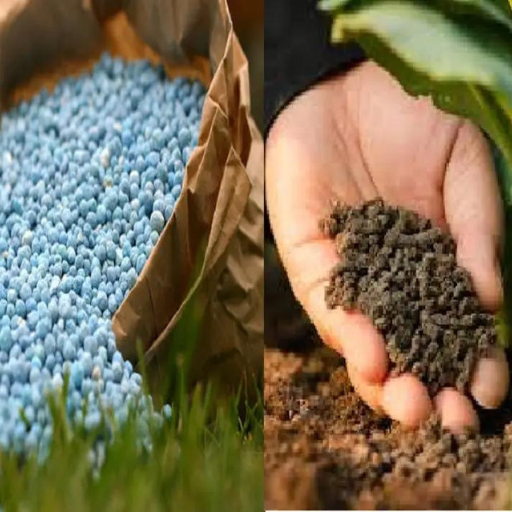
Nutrient Content
It is possible to significantly distinguish the nutrient content of organic and inorganic fertilizers. Organic fertilizers are derived from natural sources such as compost, manure, and bone meal. They have wide spectrum of essential nutrients but at a lower concentration than inorganic fertilizers. Organic choices also introduce helpful microbes, improve soil structure and increase long-term soil fertility.
On the other hand, inorganic fertilizers are synthesized from chemical compounds and provide accurate high amounts of nitrogen, phosphorous or potassium. These nutrients are available to plants leading to increased growth rates and yields. However, unlike their organic counterparts, this type of fertilizer may not offer the same long-term benefits for soil health leading to soil acidification if not properly managed that will cause pollution.
In conclusion, while organic fertilizers nurture the soil’s ecosystem and promote sustainable agricultural practices, inorganic fertilizers deliver immediate and higher nutrient availability which is critical for large-scale farming operations.
Cost Effectiveness And Availability
There re marked differences when considering cost effectiveness and availability between organic and inorganic fertilizers. The reason why organic forms tend to be costly is due to expenses incurred while sourcing for natural materials that undergo processing. Nonetheless they can often be found with local suppliers supporting local economies as well as reducing carbon footprints related to transportation . On the other hand , inorganic forms are cheaper because they can be obtained easily from many global suppliers through bulk purchases . Their lower cost of buying them in bulk form makes them suitable for big scale agriculture . However , even though organic versions seems costly at first , later it has been proved that they confer more benefits on soil health thus enhancing sustainability on farm sites .
Long-Term Effects on Soil
The long term impacts that come about after using either one of these types of fertilizer shows substantial difference s when it comes to their effect on soil health above others . Improve its structure by increasing its amount of organic matter so as to enhance development of microbial systems. This results into cycling of nutrients, increasing water retention and lowering erosion levels hence more sustainable farming practices and healthier soils.
On the other hand, inorganic fertilizers can lead to soil degradation if they are used excessively although they work well as instant nutrient source. Continuous use leads to soil acidification, depletion of organic matter and a decrease in beneficial microbial activities. As result, it will lose its fertility together with ability to store and supply nutrients; thus making it necessary for farmers to keep applying increasingly high amounts of fertilizers on crops so as not to reduce crop yield . In essence, while inorganic forms provide short-run benefits ,organic fertilizers enhance the resilience as well as the long-term sustainability of soil health.
Which Fertilizer Should You Choose?
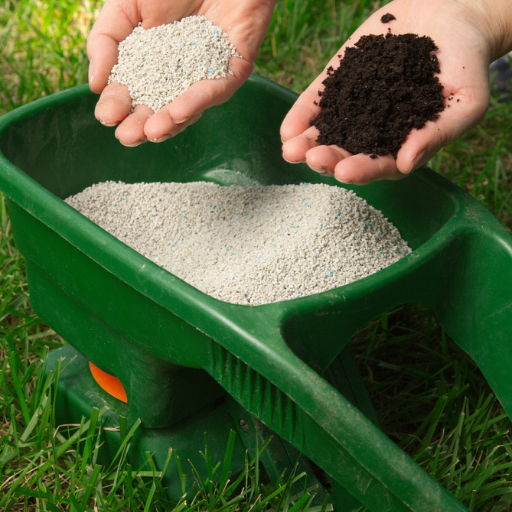
Factors to Consider when Choosing Organic or Inorganic Fertilizers:
When choosing between organic and inorganic fertilizers, there are several factors that should be considered:
- Environmental Impact: Soil structure and microbial activity are improved by organic fertilizers which are environmentally friendly. Water contamination risks are also reduced as well as soil degradation. Conversely, inorganic fertilizers can cause environmental problems like water pollution and acidifying soils if they are misused.
- Nutrient Availability: Immediate nutrient availability is one of the benefits of using inorganic fertilizers that ensures faster growth of crops. For instance, organic manures provide nutrients at a slow pace hence supporting long term sustainability and health of the soil.
- Cost and Availability: On the other hand, while most inorganic fertilizers tend to be cheaper and easily available in large quantities; it may require more money to acquire organic ones. However, this expense could be compensated for over time due to an improvement in soil condition and reduced reliance on chemical input.
- Soil Type and Crop Variety: The kind of crop being grown will also have implications on the decision, considering the fact that some might best respond to immediate application of nutrients provided by inorganic fertilizer while others particularly those growing under degraded or depleted fertility conditions may perform optimally with gradual supply of nutrients from organic fertilizers.
Ultimately, your choice between organic or inorganic fertilizers will depend on balancing short-term requirements with long-term sustainability taking into account what your plants need specifically and how healthy your soil is plus its environment around it.
Factors That Influence Your Choice
Several key considerations come into play when deciding between organic and conventional mineral-based fertilizers:
- Environmental impact: Generally speaking, organic manures help create healthier soils by reducing pollution risks. They support biodiversity as well as improve water retention within the soil. Conversely, incorrect use of synthetic substances can have adverse effects such as water contamination or even soil erosion.
- Nutrient Release Speed: The rate at which nutrients are released is critical. Inorganic manures give a rapid nutrient release that can be useful for immediate plant growth, while organic ones produce a slow and sustained release of nutrients essential to long-term soil fertility and health.
- Soil Health: The use of organic fertilizers in the soil promotes build-up of organic matter thus improving its structure and microbial activity. Among other things, it leads to increased water infiltration and retention as well as more vigorous root systems of plants. Inorganic fertilizers do not support soil organic matter development yet they may be effective in meeting short-term nutrient requirements resulting in soil structural issues with time.
These should help you make an informed decision suited to your particular agricultural needs. By striking a balance between the present needs of your crops’ growth vis-à-vis what is good for the soils in future, you will get it right.
Combining Organic Fertilizer with Synthetic Ones
The incorporation of both organic and inorganic fertilizers can offer an integrated approach towards achieving optimum plant growth and soil health. By blending the two types together, on one hand we can take advantage of immediate availability of nutrients provided by synthetic substances while on the other enhancing long term fertility through slow nutrient release from natural sources. The result is stronger plants that withstand better stress conditions, improved yields and maintained health for our soils.
Inorganic fertilizers, when applied together, can give the necessary nutrient boost for the plant growth and especially in soils lacking nutrients. Correspondingly, organic fertilizers are rich in vital organic matter that improves soil structure, microbial activity as well as water retention ability. However, these fertilizers must be used in proper proportions and at appropriate times to avoid high nutrient loads and potential environmental impacts.
For instance, one approach is using inorganic fertilizers at early stages of development when nutrient uptake is at its peak followed by applying organic manure to maintain constant nutrition supply for ongoing soil health conditions. Combining both types of fertilizer will guarantee vigorous crop production hence sustainable farming techniques.
Environmental Impact of Fertilizers
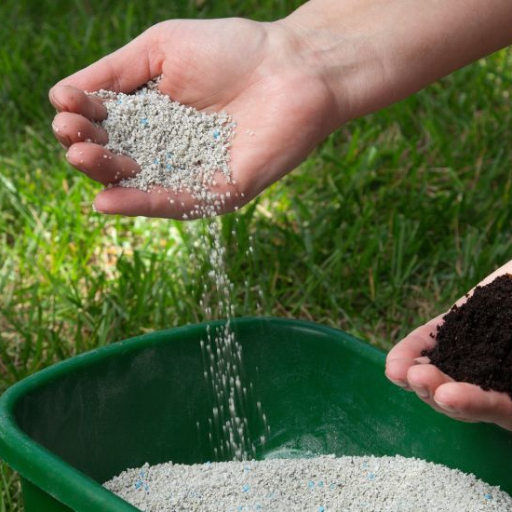
Sustainability of Organic Fertilizers
During my research, organic fertilizers are sustainable since they originate from renewable sources such as compost, manure and bone meal that are locally available in many instances. In addition to providing the essential nutrients for plants, these fertilizers also improve soil organic matter and microbial activities. This subsequently results in an improved soil structure through aeration and water holding capacity. Furthermore, organic fertilizers help reduce the dependence on synthetic chemicals thus reducing chances of environmental pollution and enhance biodiversity. Choosing organic fertilizers allows gardeners and farmers to adopt sustainable agricultural practices that have benefits for both the environment and long-term health of their soils too.
Environmental Concerns with Inorganic Fertilizer
There are several environmental concerns posed by utilization of inorganic fertilizer even though it is effective at promoting fast plant growth. Firstly, most of them contain synthetic chemicals which if not properly controlled may lead to water contamination via run-off leading to pollution of water bodies e.g., aquatic ecosystems as well as drinking water supplies. This results in algal blooms and eventually oxygen depletion hence death of marine life. Use of large amounts of these types degrades soil fertility over time causing reduced yields necessitating more inputs per unit product which ultimately leads to poor soil health condition. Lastly, making such products is energy intensive due reliance on fossil fuels resulting into greenhouse gas emissions thereby contributing climate change. These effects demonstrate the need for prudent handling and reduction in use of chemical based fertilizers so as to protect ecosystems but still sustain farming systems.
Best Practices for Minimizing Negative Impact
To minimize negative impacts associated with inorganic fertilizers, best practices should be adopted:
- Integrated Nutrient Management (INM): Incorporating composts, manures and cover crops helps maintain soil fertility, while integrating organic and synthetic fertilizer usage that optimizes nutrient provision from both sources.
- Precision Agriculture: It involves the use site specific farm management techniques like GPS mapping, Soil Testing, variable rate application to make sure that the right amount of fertilizer is applied in the correct location at the required time. It minimizes wastage and averts runoff plus leaching.
- Controlled-Release Fertilizers: The use of slow-release fertilizers which provide nutrients gradually in accordance with plant uptake reduces nutrient leaching into water bodies. This enhances nutrient use efficiency thereby minimizing environmental risks.
- Buffer Zones and Riparian Strips: Buffer zones are vegetated riparian strips located near water bodies, which serve to trap nutrients before they reach aquatic ecosystems. These areas mitigate runoff thus conserving water quality.
- Crop Rotation and Diversification: By implementing crop rotation and diversification strategies it is possible to naturally add back soil nutrients while also breaking pest cycles. Such practices do improve soil structure, enhance nutrient availability as well as reducing the need for chemical fertilizers.
By doing this, farmers could significantly reduce the environmental load attributed to chemical based fertilizers even as they strive to maintain productivity levels on their farms.
Frequently Asked Questions (FAQs)
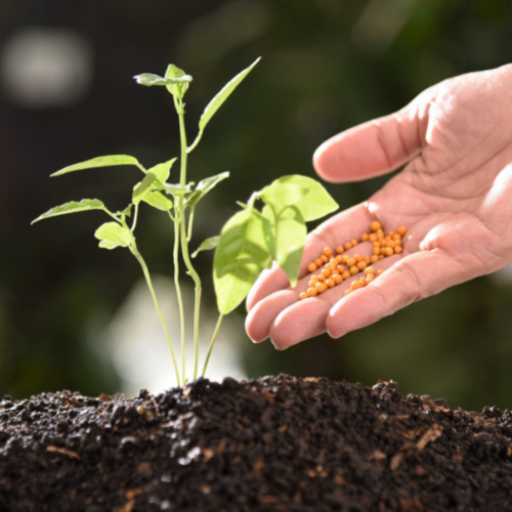
Q:What is the major difference between organic and inorganic fertilizers?
A: The main difference between organic and inorganic fertilizers is that they are made of naturally occurring materials, which are derived from plants or animals on one hand, and they are prepared from synthetic substances or processed minerals on the other hand.
Q: How do you prepare inorganic fertilizers?
A: Inorganic fertilizers are produced by chemical processes that require the isolation of nutrients from different inorganic materials typically consisting of minerals as well as industrial waste products.
Q:Are inorganic fertilizers good for the environment?
A: Inorganic fertilizers may have a greater environmental impact than organic ones; they can cause pollution, soil degradation and affect the balance of microbial life in soils although they can also be more efficient at providing specific nutrients to plants.
Q: Can organic fertilizers provide all necessary nutrients for plant growth?
A: Organic fertilisers contain large variety of essential elements such as macro- and micronutrients which get slowly released into your soil over time to feed your plants hence nutrient content may however vary depending on the source of a given organic product.
Q: What are some examples of organic materials found in fertilizers?
A: Fertilisers could include earthworm compost, sewage sludge, seaweed meal, fish meal, and bone meal among others derived from plant or animal sources which aid growing fertility as well as structure improvement
Q. How does nutrient release differ between organic and inorganic fertilizer?
A:Unlike inorganic manure, organic fertilizer releases its nutrients slowly and gradually so that there is always some available for uptake by plants while continuous supply helps maintain steady growth rates over a long period of time for better overall health of crops.






